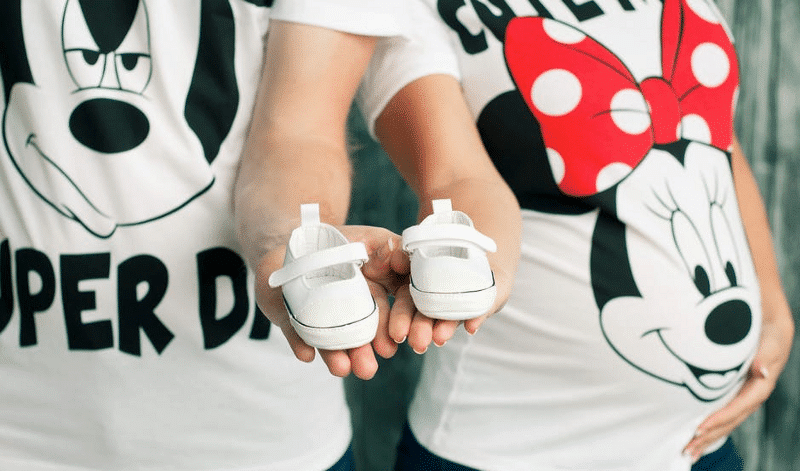
In our first entry we introduced a basic premise. Millennials — or really any demographic as broadly and vaguely defined as an entire generation — are not a monolith. Marketers are not astrologers.
Even if Millennials in this broadest of definitions might share some cultural touchstones — ignoring that they are individuals, from all walks of life, and inevitably experiencing radically varying milestones on radically varying schedules — this should have very little relevance to savvy marketers.
StatSocial’s goal is to build structure and meaningful insight out of billions of unstructured web activities, so marketers, agencies, and publishers can know more specifically than ever before who their target audience is, and where to find them (and we even help you figure out what to say to them when you do).
If your plan is to “throw everything we have at the side of the barn and hope something hits it,” and there’s no talking you out of it, we wish you the best. But, before burning through cold, hard cash, and precious time on a “let’s all cross our fingers and hope for the best” marketing strategy, hear us out.
StatSocial will show you right now how easy it is to break Millennials down to two smaller groups, and in doing so you immediately see that these groups have very little to do with one another, from a marketing perspective.
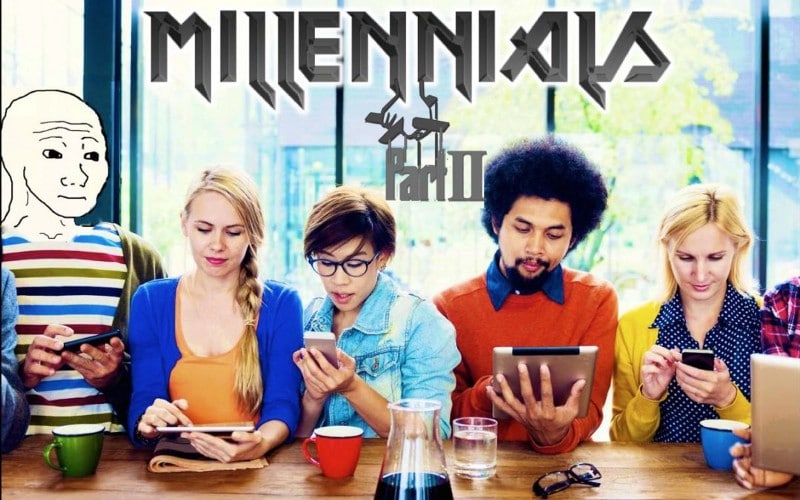
There are those Millennials who still, in our current society, frankly have one foot in adolescence, and there are those who are also Millennials, apparently, who are integrating, or have already fully navigated their way into the “grown-up” world.
Right off the bat, let’s go with one of the topics we all care about most. Brands. Check out these two lists, starting with those of college age.
TOP 10 BRANDS WITH MILLENNIALS AGES 18 TO 24 RELATIVE TO 25–34 YEAR OLDS
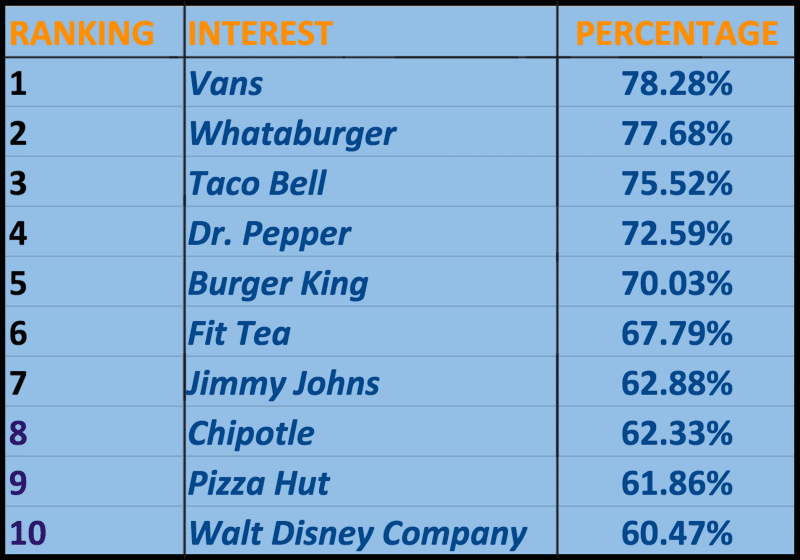
Sneakers, a lot of fast food, but also Fit Tea (our last entry did say that this group is 59% more likely to be concerned with “nutrition” and 46% more likely to be concerned with “weight loss” than the 25 to 34 set, so I suppose here’s our nod to such concerns among the barrage of carbohydrates, and delicious cheeses).
Also unsurprising, this group is nearly 61% more likely than their older theoretical, generational peers to be interested in the numerous ventures of perhaps the most quintessentially American of all corporations, The Walt Disney Company.
With a diversified portfolio of films, theme parks, Broadway shows, and general entertainment attractions — encompassing, it should be noted, the fictional universes of Star Wars, Marvel Comics, and The Muppets, as well as the frequently excellent productions of Pixar Studios, in addition to Disney’s own slate of classics, some dating back as far as 70 years plus — it would seem their appeal would be universal (forgive any inadvertent puns alluding to other multi-national entertainment giants).
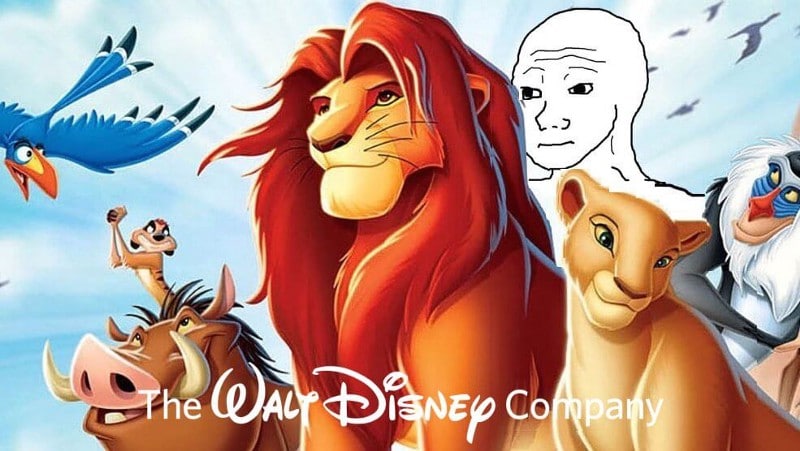
But Disney didn’t precisely have a scintillating 70s, and this malaise stretched into the 80s.
The late-80’s, however, saw the studio suddenly come to life, and Walt Disney Studios again became the market leader in family entertainment, and it all started how Walt would have wanted it, with a string of mega-hit, state-of-the-art, critically praised animated films (1991’s Beauty and the Beast even being nominated for an Oscar for Best Picture, and this back when only five films were nominated).
The parents of the younger Millennials thusly kept their rugrats quiet with constant DVD showings of The Little Mermaid, Beauty and the Beast, The Lion King, Tarzan, and of course Pixar’s — the digital animation studio started in part by Steve Jobs, but owned by Disney for many years now — numerous masterpieces and lesser-pieces alike.
A vacation to one of our nation’s two magnificent Disney theme parks is an indelible staple in the childhood of nearly every American as well.
Millennial loyalty to “the house of the mouse” is real, but it tends to reside most profoundly with the younger set. Absent altogether from the top brands among the older bunch. Perhaps the post-collegiate Millennials once shared in this enthusiasm, but now they are grown-ups with rugrats of their own, and sitting through 40 showings of the “The Emperor’s New Groove” on a daily basis. As such, a bit of the luster has maybe worn off. Especially after pricing what a vacation to Walt Disney World actually costs.
THE TOP 10 BRANDS WITH MILLENNIALS AGES 25 TO 34 COMPARED TO THOSE AGED 18–24.
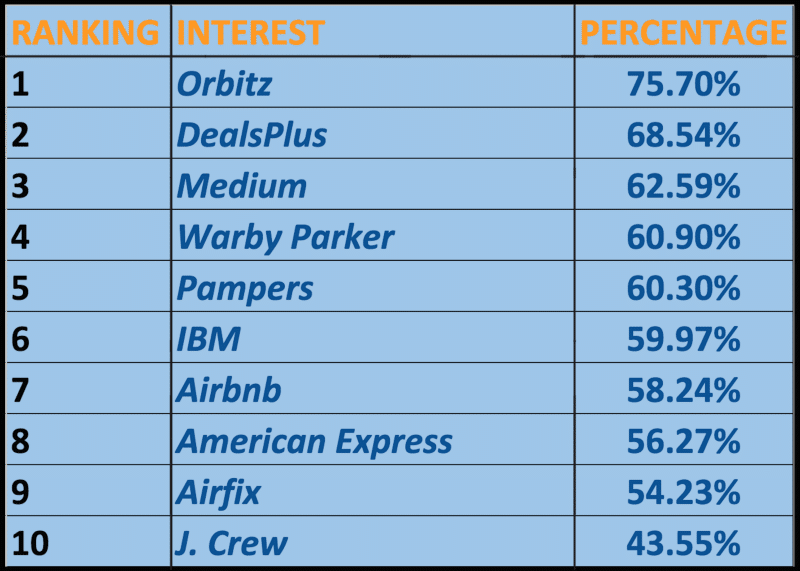
Right at number one, the concern expressed above could conceivably be addressed. Traveling in the most economical way is a concern for all, but those with a young family can multiply that concern by two, or possibly four, and so on.
We also see the theme of, if you will, “couponing” extended into all areas of life with the number two company on the list. The young, especially these days, have every motivation to live economically. But being young, that doesn’t necessarily mean they respond to such wisdom. As responsibilities become more real, and especially as marriage and children enter the picture — as they often will for the 25 to 34 set — pinching pennies for a lot of families is a necessity.
We see the very platform from which we are blogging this at number three. At number 4, Warby Parker, a company of great interest to those perhaps beginning to lose their own eyesight as they near middle age, and also those with demanding youngsters looking to have their eyewear needs met in a fashionable way, all while on a budget.
Moving on we see our proud partners in IBM, discount travel again rears its head with Airbnb, American Express needs no explanation, Airfix — a market leader in making models, like the kind you glue together to make scale-size airplanes and such — appeals quite possibly to the same portion of this demographic interested in role playing games as reported in our last entry.
And finally J. Crew shows that these younger grown ups keep their fashion simple, sensible, but somewhat youthful and not hopelessly unhip.
Miles apart, though, from the mountains of fast food, soda, sneakers, and cartoons dominating the younger set. Which illustrates our point in broad terms. If we were to break it down even further, say 18 to 21 year olds versus 22 to 24 year olds, the granularity would reveal even further differences.
You needn’t market by demographics such as age at all with StatSocial. Surely not by necessity.
We provide you with a veritable arsenal of means for locating precisely the audience who will be most receptive to your brand, message, product, or service.
Stay tuned for our next entry, which will explore the varying music interests of millennials.
— —
In this space we will be continuing to share an assortment of statistical breakdowns and comparisons emphasizing, and elaborating upon what we’ve discussed above. Other, older generations may be popping in to say hello along the way as well. Bookmark and revisit often.
In the meantime, we encourage you to add us on Facebook and Twitter, and if you get a chance, say hello.
